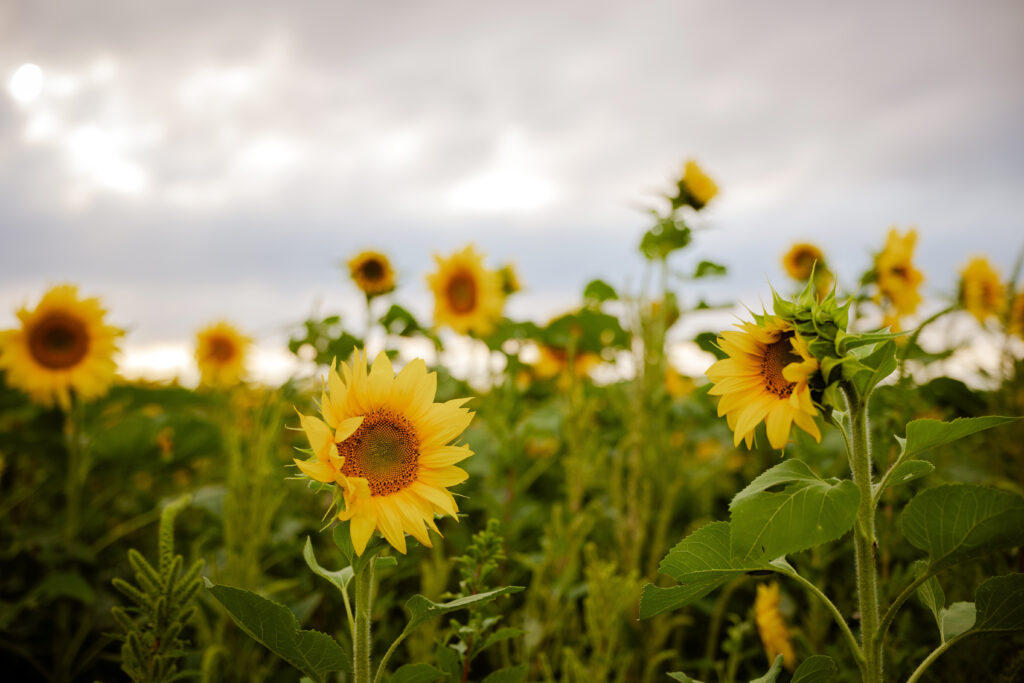
Mark Knobel and his family farm land North of Fairbury, Nebraska. Over 25 years ago the Knobels started to include sunflowers into their cropping system rotation as a double crop following winter wheat. The Knobels rotation on dryland is corn, soybeans, wheat and double crop sunflowers. Sunflowers were given a try years ago after very inconsistent results with double crop soybeans.
Sunflowers definitely are not for everyone, but they have been a more consistent double crop for the Knobels. The Knobels raise black oil sunflowers that are high in quality oils and high in protein. Black oil sunflowers are also a prominent component of most bird food, often sold as a stand-alone product for feeding and attracting birds.
The bird seed market is the market Knobel Farms currently produces for. Knobel Farms grown sunflowers seeds are marketed through a broker with ties to the area. The seeds are sold by the pound on a “picked up-buyers call” arrangement. Knobel flowers have been shipped to large and small processors from Georgia to San Antonio, Texas to Wisconsin and many places in between.
The production process begins normally within a few days of the completion of the wheat harvest. The sunflowers are planted no-till directly into the wheat stubble in 30” rows. Seeding population is usually 20-24,000 seeds per acre which is very similar to dryland corn in our area. The sunflowers emerge and grow extremely fast in the warm summer temperatures. In about 60 days the crop will begin to flower. When the sunflowers are in full bloom the fields are truly a brilliant, magnificent sight!
Over the years, people began asking permission to take photos of the fields, having graduation or family photo shoots in the blooming sunflower fields. The annual blooming of the sunflower fields is now an anticipated event. Mark’s wife, Jan keeps in contact with some local photographers and posts on Facebook when and where the sunflowers might be blooming. She reminds people to be cautious driving county roads with blind intersections or the dirt/mud roads. The glory of the bloom only lasts a few days. As the petals drop the seed heads droop with the heavy seeds growing rapidly. Maturity is generally reached in early to mid-October. The sunflowers will tolerate light frost.
Harvest will follow in early to mid-November depending on the weather. The stalks need to be dry. The seed needs to be 10 percent moisture or below for market. The crop can be harvested above 10 percent moisture if artificial drying is available. Normally, natural air on warmer low humidity days will dry the crop. The crop harvests with the same combine used on corn, soybeans, wheat and milo. A special sunflower header is used on the Knobel Farm. The header takes in a minimum amount of the stalk, efficiently gathers the heads and catches the shattered seeds. Yield with good moisture can exceed 2,000 pounds per acre.
Sunflowers have proven to be a viable alternative crop used in a double crop scenario for the Knobels.
There are challenges such as:
•The market is thin and distant;
•Must store the crop – sometimes for many months;
•Limited broad leaf weed options available for weed control;
•Some specialized harvest equipment is helpful;
•New set of management skills need to be acquired;
•Crop can extract all soil moisture.
Some of the benefits are:
•Potential income to add to the wheat crop year;
•Sunflowers have an aggressive top root that shatter compaction;
•The decaying tap root provides deep channels for water infiltration for subsequent crops.
•Sunflowers are a totally unrelated crop species to bring to the rotation.
